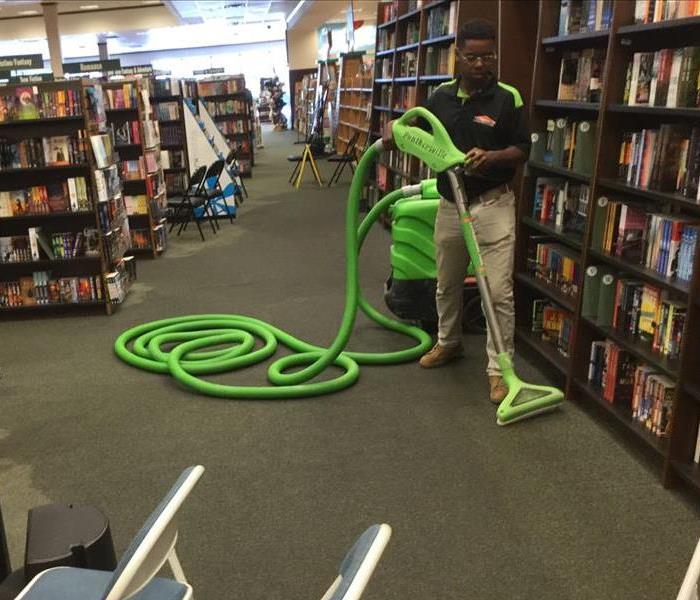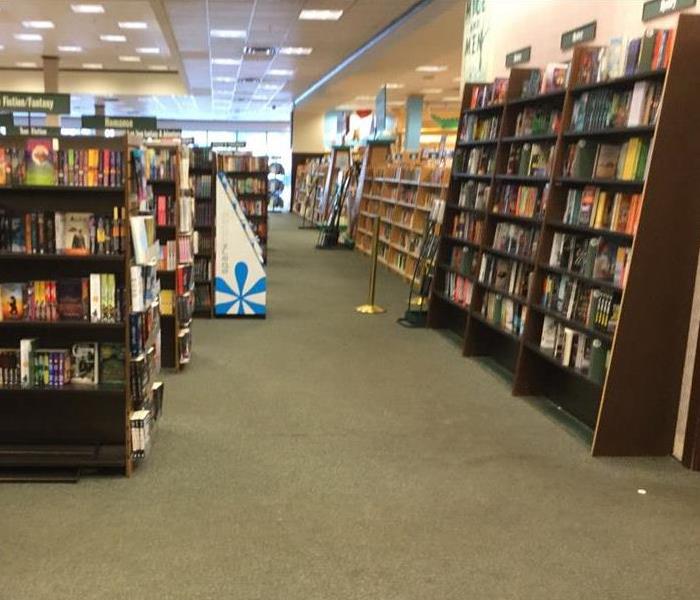Water Flooded Barnes & Noble in Morrow, GA
Barnes & Noble in Morrow, GA encountered a water loss from one of the toilets in the restroom. Our Production Team mitigated the damages promptly by completing the following steps:
- Inspection—they inspected the building and evaluated the damages. We have the specialized tools and instruments to measure the moisture content of the building. To do this, they placed the instruments on top of the floors in the damaged areas to get accurate readings.
- Prevention of further damage—the longer water damage sits untreated, then the more likely it is that additional damages can occur. Therefore, we determined that drying equipment was required, and so dehumidifiers were placed in the areas to prevent against further damages like mold growth. Our staff assessed how long the dehumidifiers were needed.
- Removal of standing water—they used vacuums and rotate them around the affected areas, and sucked up all the water that was present as the Before picture illustrates.
- Drying—they used different types of air movers to help circulate airflow throughout the affected areas. They also lifted up sections of the carpet and positioned the air movers at certain sections of the walls to ensure that air got to the most saturated parts of the affected areas.
- Containment—the containment and drying phases happened simultaneously. While drying out the building, wet areas were taped off in order to concentrate the heat and suction to the affected areas that needed to be dried out. Containment is a critical process, because it enabled our Technicians to maintain the environment of the building and dried the affected areas as quickly and efficiently as possible.
- Monitoring—throughout the drying process, our Production Crew Chief stopped by periodically to monitor the progress of the drying. Specifically, he monitored the dehumidifiers’ intake and output temperatures, and humidity levels to ensure that the dehumidifiers were not excreting wet air out into the building. Our Production Crew Chief also returned and took readings of the same areas that the Team had worked on during the inspection phase. When the areas were declared as dry, our Team moved the equipment around to other areas of the building that were still wet.
- Completion—once the building had been returned to its previous dry state, the water damage cleanup process was considered completed. At this point the drying equipment was removed from the building and our Production Team confirmed with our customer, Barnes & Noble, that the work was satisfactory.







 24/7 Emergency Service
24/7 Emergency Service

